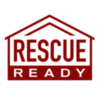Teaching Fire Safety to Children
A Comprehensive Guide
Fire safety is a crucial topic that every child should understand from an early age. Teaching fire safety to children helps them respond appropriately in emergencies, potentially saving lives. Here’s a guide to effectively teaching fire safety to children in a way that is engaging, educational, and empowering.
1. Start with the Basics: What is Fire?
Introduce children to the concept of fire. Explain how fire is used in everyday life for cooking, heating, and lighting, but also discuss its potential dangers. Use simple language and relate it to their daily experiences.
Activity Idea: Fire and Heat Source Identification
Show pictures of various sources of heat and flames like stoves, candles, and campfires.
Discuss which ones are safe and why they should be careful around them.
2. Teach the “Stop, Drop, and Roll” Technique
If a child’s clothing catches fire, they should know to stop, drop to the ground, and roll to extinguish the flames. Demonstrate this technique and practice it regularly.
Activity Idea: Role-Playing
Have a fire safety drill where children practice stopping, dropping, and rolling on a soft surface like grass or a mat.
3. Understanding Smoke Alarms
Explain what a smoke alarm is and why it is important. Make sure children know the sound of the smoke alarm and what to do when they hear it.
Activity Idea: Smoke Alarm Sound Recognition
Let children hear the sound of a smoke alarm so they can recognize it.
Create a game where they identify the sound and practice what actions to take (e.g., crawl low under smoke, find an exit).
4. Creating an Escape Plan
When teaching fire safety to children it is important to understand the need for an escape plan. Draw a simple floor plan of your home and mark two ways out of each room. Designate a meeting spot outside the home.
Activity Idea: Escape Plan Map
Create a map of your home with children, marking exits and the meeting spot.
Practice different escape routes during a fire drill.
5. Knowing Emergency Contacts
Teach children how to call 911 in an emergency. Make sure they know their address and understand when it is appropriate to make the call.
Activity Idea: Emergency Contact Practice
Role-play making a 911 call with children, guiding them on what information to provide.
Create a list of emergency contacts and practice memorizing important numbers.
6. Fire Hazards Awareness
Educate children about common fire hazards in the home, such as playing with matches or lighters, leaving cooking unattended, and overloading electrical outlets.
Activity Idea: Fire Hazard Hunt
Organize a scavenger hunt where children identify potential fire hazards in different rooms and discuss why they are dangerous.
7. Safety Around Fires and Heat Sources
Discuss the importance of maintaining a safe distance from open flames and heat sources like fireplaces, stoves, and barbecues.
Activity Idea: Safe Distance Practice
Use a tape measure to mark a safe distance around different heat sources and have children practice staying outside these boundaries.
8. Fire Safety Stories and Videos
Children learn well through stories and visual aids. Utilize fire safety books, videos, and interactive apps designed for children.
Activity Idea: Story Time
Read fire safety stories together and discuss the lessons learned.
Watch educational videos and have a discussion afterward to reinforce key points.
9. Visit a Fire Station
If possible, arrange a visit to a local fire station. Meeting firefighters and seeing fire equipment up close can make fire safety lessons more memorable.
Activity Idea: Fire Station Field Trip
Plan a trip to the fire station where children can ask questions and see fire trucks and gear.
Encourage children to thank firefighters and learn about their role in the community.
10. Reinforce Regularly
Repetition is key to retention. Regularly review fire safety rules and practices to ensure children remember them.
Activity Idea: Monthly Fire Drill
Schedule monthly fire drills at home to keep everyone prepared and to reinforce the importance of fire safety.
Conclusion
Teaching fire safety to children is an ongoing process that involves education, practice, and reinforcement. Engaging in activities, role-playing, and real-life examples can empower children with the knowledge and skills they need to stay safe in the event of a fire. Remember, the goal is to make fire safety a natural and automatic response for children, ensuring they know how to protect themselves and others
We hope you found this helpful; you might also want to explore our Rescue Ready RetroFit Fire Rescue Ladder. It is designed to be pre-installed under your window for a safe, easy-to-find escape while also looking great in your home. You can learn more here.
